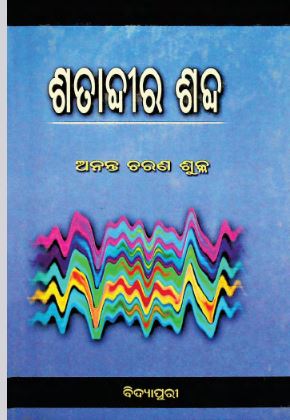Anant Charan Sukla’s “Satabdira Sabda,” published in 2007, stands as a remarkable contribution to Odia literature, serving as a bridge connecting readers with the rich tapestry of the Odia language and culture over the past century. This compilation of stories is not merely a collection of narratives; it is a reflection of societal changes, linguistic evolution, and the vibrant cultural identity that defines Odisha.
The title “Satabdira Sabda” translates to “Words of the Century,” which aptly captures the essence of the book. It intricately examines how language, as a living entity, adapts and transforms in relation to the socio-political and cultural contexts. Through a series of poignant and thought-provoking tales, Sukla encapsulates the essence of Odia life spanning 100 years, making readers reflect on the interplay between language and the human experience.
Each story within the book serves as a microcosm of broader themes, exploring various aspects of Odia society. Sukla adeptly weaves together personal narratives with historical events, creating a rich backdrop that resonates with readers of all ages. The characters are carefully crafted, embodying the complexities of human emotions, aspirations, and struggles.
One significant element of “Satabdira Sabda” is its focus on the transformation of language over the decades. The stories highlight how language reflects the changing dynamics of society, including the impact of modernization, globalization, and technological advancements. Sukla observes how traditional Odia words and phrases are gradually being replaced or altered, making the reader acutely aware of the vulnerability of regional languages in the face of dominant global languages.
Moreover, the author includes stories that pay homage to the rich folklore and oral traditions of Odisha. These narratives serve to remind readers of the importance of preserving cultural heritage amidst rapid societal changes. By incorporating elements of folklore, Sukla ensures that the timeless wisdom and values embedded within these stories continue to resonate with the younger generation.
In “Satabdira Sabda,” the sub-stories are particularly captivating. They explore diverse themes such as love, loss, aspiration, and identity, often framed against the backdrop of changing societal norms. The juxtaposition of personal lives with broader historical contexts enriches the reader’s understanding of the Odia experience. Each sub-story is a slice of life, inviting readers to immerse themselves in the poignant emotions and nuanced relationships depicted on the pages.
Sukla’s narrative style is engaging and accessible, making the book suitable for a wide range of readers. His ability to blend simplicity with depth ensures that both young adults and seasoned readers can appreciate the stories. The use of vivid imagery and relatable characters breathes life into the narratives, allowing readers to forge connections with the characters and their experiences.
In conclusion, Anant Charan Sukla’s “Satabdira Sabda” is more than just a storybook; it is a vital exploration of the evolution of the Odia language and culture. Through its compelling narratives, the book underscores the importance of language as a vessel for cultural identity. In a rapidly changing world, Sukla’s work serves as a gentle reminder of the need to cherish and preserve the richness of regional languages and the stories they tell. “Satabdira Sabda” is indeed a treasure trove for anyone seeking to delve deeper into the heart of Odia literature and culture.
Books Info
| Books name | Satabdira Sabda/ଶତାବ୍ଦୀର ଶୋଷ |
| Editor | Anant Charan Sukla |
| No Of pages | 114 |
| Publisher | Vidyapuri |
| Publication | 2007 |
| Printed At | Sangita Printers |
| Distributor | NA |

